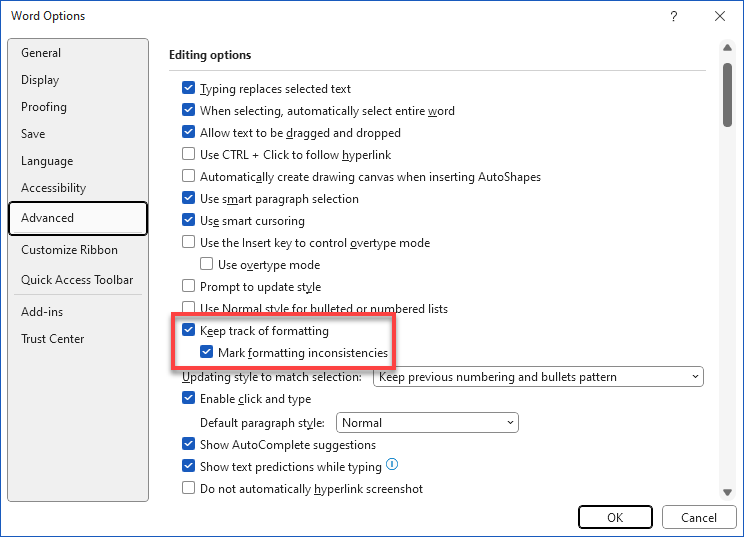Please Note: This article is written for users of the following Microsoft Word versions: 2007, 2010, 2013, 2016, 2019, Word in Microsoft 365, and 2021. If you are using an earlier version (Word 2003 or earlier), this tip may not work for you. For a version of this tip written specifically for earlier versions of Word, click here: Getting Rid of Blue Squiggly Underlines.
Written by Allen Wyatt (last updated October 7, 2023)
This tip applies to Word 2007, 2010, 2013, 2016, 2019, Word in Microsoft 365, and 2021
Ivan noted that on his PC the text he writes is frequently "marred" by squiggly underlines in blue. Right-clicking gives him options of Ignore Once, Ignore Rule, or Replace Direct Formatting with Style Normal. Ivan wants to turn off the blue squiggly underlines and is wondering how to do it.
Word likes squiggly underlines and has used them differently in different versions of Word. The most common squiggly underline is red, which marks a potential spelling error. In some versions of Word you'll see green squiggly underlines, which indicate a potential grammar error. The blue squiggly underlines were originally used to mark formatting inconsistencies, which is why Ivan saw the options he noted—particularly "Replace Direct Formatting with Style Normal"—when he right-clicked the blue-squiggly-underlined word or phrase.
You can turn off this marking of formatting inconsistencies by making a configuration change in Word:

Figure 1. The advanced options of the Word Options dialog box.
In some versions of Word, though, blue squiggly underlines are also used to mark grammar errors. (Yes, Microsoft has changed this—in some versions it was green, in some versions blue. Go figure!). If you turn off the setting noted above and you still have blue squiggly underlines, then follow these steps:

Figure 2. The proofing options of the Word Options dialog box.
That should do it; your blue squiggly underlines should be gone.
WordTips is your source for cost-effective Microsoft Word training. (Microsoft Word is the most popular word processing software in the world.) This tip (6053) applies to Microsoft Word 2007, 2010, 2013, 2016, 2019, Word in Microsoft 365, and 2021. You can find a version of this tip for the older menu interface of Word here: Getting Rid of Blue Squiggly Underlines.

The First and Last Word on Word! Bestselling For Dummies author Dan Gookin puts his usual fun and friendly candor back to work to show you how to navigate Word 2013. Spend more time working and less time trying to figure it all out! Check out Word 2013 For Dummies today!
The style area, displayed at the left side of your document, can be helpful in understanding how styles are used in your ...
Discover MoreThe Styles Gallery can be a great tool for applying your often-used styles. It can be frustrating, though, if you cannot ...
Discover MoreWant a quick way to change the shortcut key associated with a tool available on a ribbon, toolbar, or menu? Here's one ...
Discover MoreFREE SERVICE: Get tips like this every week in WordTips, a free productivity newsletter. Enter your address and click "Subscribe."
There are currently no comments for this tip. (Be the first to leave your comment—just use the simple form above!)
Got a version of Word that uses the ribbon interface (Word 2007 or later)? This site is for you! If you use an earlier version of Word, visit our WordTips site focusing on the menu interface.
Visit the WordTips channel on YouTube
FREE SERVICE: Get tips like this every week in WordTips, a free productivity newsletter. Enter your address and click "Subscribe."
Copyright © 2024 Sharon Parq Associates, Inc.
Comments